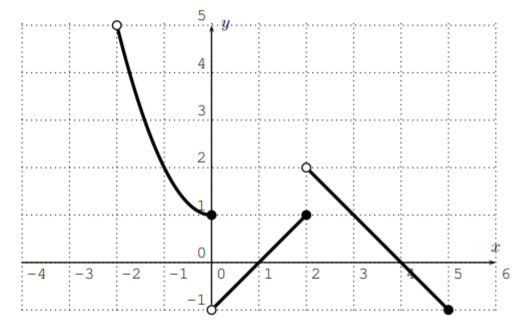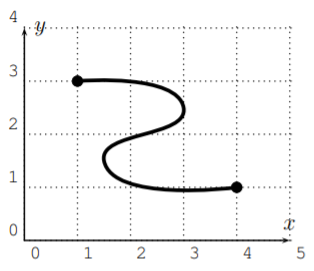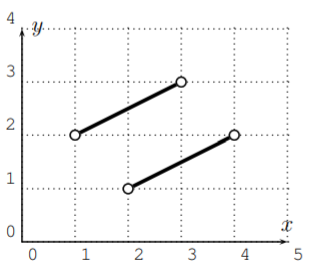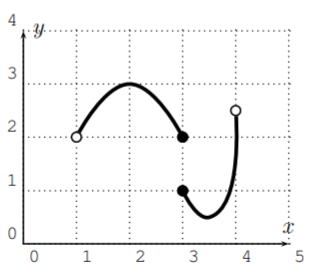3.3: Exercises
- Page ID
- 48963
For each of the following functions,
- \(f(x)=3x+1\)
- \(f(x)=x^2-x\)
- \(f(x)=\sqrt{x^2-9}\)
- \(f(x)=\frac{1}{x}\)
- \(f(x)=\frac{x-5}{x+2}\)
- \(f(x)=-x^3\)
calculate the function values
- \(f(3)\)
- \(f(5)\)
- \(f(-2)\)
- \(f(0)\)
- \(f(\sqrt{13})\)
- \(f(\sqrt{2}+3)\)
- \(f(-x)\)
- \(f(x+2)\)
- \(f(x)+h\)
- \(f(x+h)\)
- Answer
-
-
- \(10\)
- \(16\)
- \(-5\)
- \(1\)
- \(3 \sqrt{13}+1\)
- \(3 \sqrt{2}+10\)
- \(-3 x+1\)
- \(3 x+7\)
- \(3 x+1+h\)
- \(3 x+3 h+1\)
-
- \(6\)
- \(20\)
- \(6\)
- \(0\)
- \(13-\sqrt{13}\)
- \(8+5 \sqrt{2}\)
- \(x^{2}+x\)
- \(x^{2}+3 x+2\)
- \(x^{2}-x+h\)
- \(x^{2}+2 x h+h^{2}-x-h\)
-
- \(0\)
- \(4\)
- undefined
- undefined
- \(2\)
- \(\sqrt{2+6 \sqrt{2}}\)
- \(\sqrt{x^{2}-9}\)
- \(\sqrt{x^{2}+4 x-5}\)
- \(\sqrt{x^{2}-9}+h\)
- \(\sqrt{x^{2}+2 x h+h^{2}-9}\)
-
- \(\dfrac{1}{3}\)
- \(\dfrac{1}{5}\)
- \(-\dfrac{1}{2}\)
- undefined
- \(\dfrac{\sqrt{13}}{13}\)
- \(\dfrac{3-\sqrt{2}}{7}\)
- \(-\dfrac{1}{x}\)
- \(\dfrac{1}{x+2}\)
- \(\dfrac{1+x h}{x}\)
- \(\dfrac{1}{x+h}\)
-
- \(\dfrac{-2}{5}\)
- \(0\)
- undefined
- \(\dfrac{-5}{2}\)
- \(\dfrac{\sqrt{13}-5}{\sqrt{13}+2}=\dfrac{23-7 \sqrt{13}}{9}\)
- \(\dfrac{\sqrt{2}-2}{\sqrt{2}+5}=\dfrac{-12+7 \sqrt{2}}{23}\)
- \(\dfrac{-x-5}{-x+2}\)
- \(\dfrac{x-3}{x+4}\)
- \(\dfrac{x-5+h x+2 h}{x+2}\)
- \(\dfrac{x+h-5}{x+h+2}\)
-
- \(-27\)
- \(-125\)
- \(8\)
- \(0\)
- \(-\sqrt{2197}\)
- \(-45-29 \sqrt{2}\)
- \(x^{3}\)
- \(f(x+2)=-(x+2)^{3}\) or in descending order \(f(x+2)=-x^{3}-6 x^{2}-12 x-8\)
- \(-x^{3}+h\)
- \(-(x+h)^{3}\) or \(-x^{3}-3 x^{2} h-3 x h^{2}-h^{3}\)
-
Let \(f\) be the piecewise defined function
\[f(x)=\left\{ \begin{matrix} x-5 & \text{, for}& -4<x< 3 \\ x^2 & \text{, for}& 3\leq x\leq 6 \end{matrix} \right. \nonumber \]
- State the domain of the function.
Find the function values
- \(f(2)\)
- \(f(5)\)
- \(f(-3)\)
- \(f(3)\)
- Answer
-
- \(D=(-4,6]\)
- \(-3\)
- \(25\)
- \(-8\)
- \(9\)
Let \(f\) be the piecewise defined function
\[f(x)=\left\{ \begin{matrix} |x|-x^2 & \text{, for}& x< 2 \\ 7 & \text{, for}& 2\leq x< 5 \\ x^2-4x+1 & \text{, for} & 5< x \end{matrix} \right. \nonumber \]
- State the domain of the function.
Find the function values
- \(f(1)\)
- \(f(-2)\)
- \(f(3)\)
- \(f(2)\)
- \(f(5)\)
- \(f(7)\)
- Answer
-
- \(D=(-\infty, 5) \cup(5, \infty)\), or, alternatively, \(D=\mathbb{R}-\{5\}\)
- \(0\)
- \(-2\)
- \(7\)
- \(7\)
- undefined
- \(22\)
Find the difference quotient \(\dfrac{f(x+h)-f(x)}{h}\) for the following functions:
- \(f(x)=5x\)
- \(f(x)=2x-6\)
- \(f(x)=x^2\)
- \(f(x)=x^2+5x\)
- \(f(x)=x^2+3x+4\)
- \(f(x)=3-x^2\)
- \(f(x)=x^2+4x-9\)
- \(f(x)=3x^2-2x+7\)
- \(f(x)=x^3\)
- Answer
-
- \(5\)
- \(2\)
- \(2 x+h\)
- \(2 x+5+h\)
- \(2 x+3+h\)
- \(-2 x-h\)
- \(2 x+4+h\)
- \(6 x-2+3 h\)
- \(3 x^{2}+3 x h+h^{2}\)
Find the difference quotient \(\dfrac{f(x)-f(a)}{x-a}\) for the following functions:
- \(f(x)=3x\)
- \(f(x)=4x-7\)
- \(f(x)=x^2-3x\)
- \(f(x)=\dfrac{1}{x}\)
- Answer
-
- \(3\)
- \(4\)
- \(x+a-3\)
- \(\dfrac{-1}{a x}\)
Find the domains of the following functions.
- \(f(x)=x^2+3x+5\)
- \(f(x)=|x-2|\)
- \(f(x)=\sqrt{x-2}\)
- \(f(x)=\sqrt{8-2x}\)
- \(f(x)=\sqrt{|x+3|}\)
- \(f(x)=\dfrac{1}{x+6}\)
- \(f(x)=\dfrac{x-5}{x-7}\)
- \(f(x)=\dfrac{x+1}{x^2-7x+10}\)
- \(f(x)=\dfrac{x}{|x-2|}\)
- \(f(x)= \begin{cases}|x| & \text { for } 1<x<2 \\ 2 x & \text { for } 3 \leq x\end{cases}\)
- \(f(x)=\dfrac{\sqrt{x}}{x-9}\)
- \(f(x)=\dfrac{5}{\sqrt{x+4}}\)
- Answer
-
- \(D=\mathbb{R}\) all real numbers
- \(D=\mathbb{R}\)
- \(D=[2, \infty)\)
- \(D=(-\infty, 4]\)
- \(D=\mathbb{R}\)
- \(D=\mathbb{R}-\{-6\}\)
- \(D=\mathbb{R}-\{7\}\)
- \(D=\mathbb{R}-\{2,5\}\)
- \(D=\mathbb{R}-\{2\}\)
- \(D=(1,2) \cup[3, \infty)\)
- \(D=[0,9) \cup(9, \infty)\)
- \(D=(-4, \infty)\)
Below are three graphs for the functions \(f\), \(g\), and \(h\).
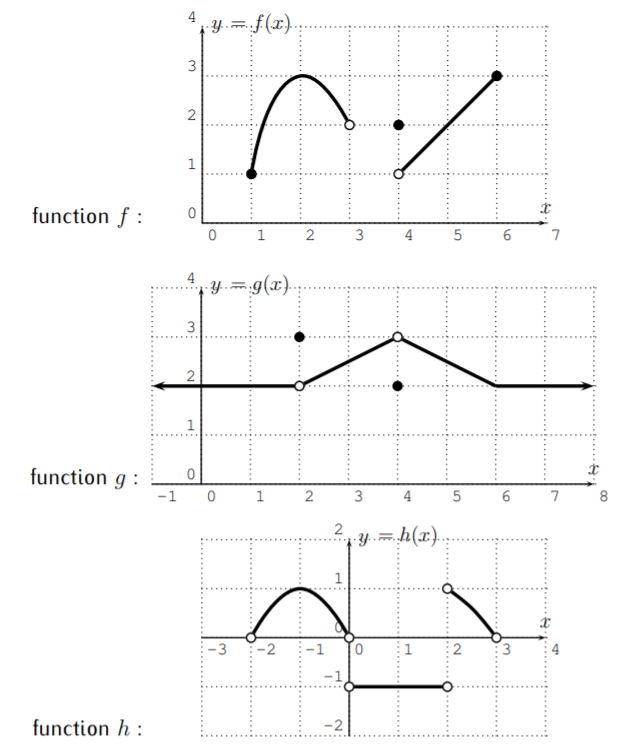
- Find the domain and range of \(f\).
- Find the domain and range of \(g\).
- Find the domain and range of \(h\).
Find the following function values:
- \(f(1)\)
- \(f(2)\)
- \(f(3)\)
- \(f(4)\)
- \(f(5)\)
- \(f(6)\)
- \(f(7)\)
- \(g(0)\)
- \(g(1)\)
- \(g(2)\)
- \(g(3)\)
- \(g(4)\)
- \(g(6)\)
- \(g(13.2)\)
- \(h(-2)\)
- \(h(-1)\)
- \(h(0)\)
- \(h(1)\)
- \(h(2)\)
- \(h(3)\)
- \(h(\sqrt{2})\)
- Answer
-
- domain \(D_{f}=[1,3) \cup[4,6]\) and range \(R_{f}=[1,3]\)
- \(D_{g}=\mathbb{R}\) and \(R_{g}=[2,3]\)
- \(D_{h}=(-2,0) \cup(0,2) \cup(2,3)\) and \(R_{h}=\{-1\} \cup(0,1]\)
- \(1\)
- \(3\)
- undefined
- \(2\)
- \(2\)
- \(3\)
- undefined
- \(2\)
- \(2\)
- \(3\)
- \(2.5\)
- \(2\)
- \(2\)
- \(2\)
- undefined
- \(1\)
- undefined
- \(-1\)
- undefined
- undefined
- \(-1\)
Use the vertical line test to determine which of the following graphs are the graphs of functions?
- Answer
-
- not a function
- this is a function
- not a function
- not a function
Let \(f\) be the function given by the following graph.
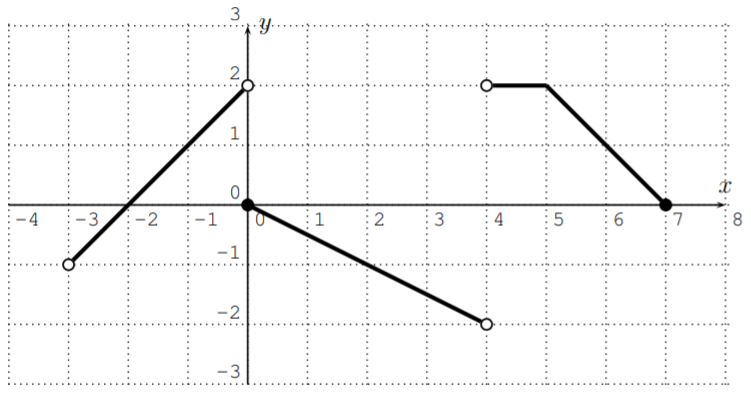
- What is the domain of \(f\)?
- What is the range of \(f\)?
- For which \(x\) is \(f(x)=0\)?
- For which \(x\) is \(f(x)=2\)?
- For which \(x\) is \(f(x)\leq 1\)?
- For which \(x\) is \(f(x)> 0\)?
- Find \(f(2)\) and \(f(5)\).
- Find \(f(2)+f(5)\).
- Find \(f(2)+5\).
- Find \(f(2+5)\).
- Answer
-
- \(D=(-3,4) \cup(4,7]\)
- \(R=(-2,2]\)
- \(x=-2\) or \(x=0\) or \(x=7\)
- \(x \in(4,5]\)
- \(x \in(-3,-1] \cup[0,4) \cup[6,7]\)
- \(x \in(-2,0) \cup(4,7)\)
- \(f(2)=-1\), \(f(5)=2\)
- \(f(2)+f(5)=1\)
- \(f(2)+5=4\)
- \(f(2+5)=0\)
The graph below displays the number of students admitted to a college during the years 1995 to 2007.
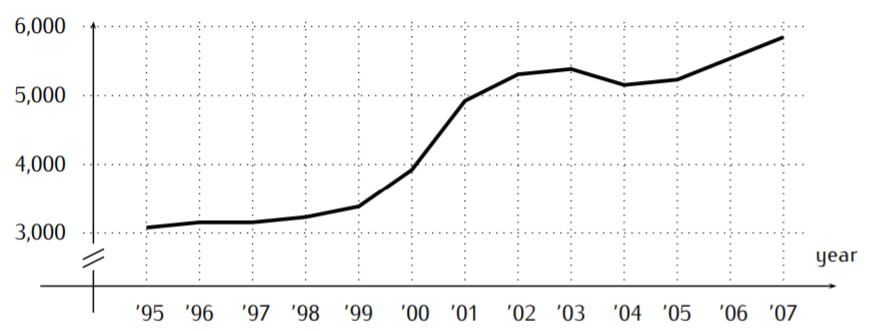
- How many students were admitted in the year 2000?
- In what years were the most students admitted?
- In what years did the number of admitted students rise fastest?
- In what year(s) did the number of admitted students decline?
- Answer
-
- Approximately 3,900 students were admitted in the year 2000
- The most students were admitted in 2007
- In 2000, the number of admitted students rose fastest.
- In 2003 the number of admitted students declined.
Consider the function described by the following formula:
\[f(x)=\left\{ \begin{matrix} x^2+1 & \text{, for}& -2< x\leq 0 \\ x-1 & \text{, for}& 0<x\leq 2 \\ -x+4 & \text{, for} & 2<x\leq 5 \end{matrix} \right. \nonumber \]
What is the domain of the function \(f\)? Graph the function \(f\).
- Answer
-
domain \(D=(-2,5]\)
graph:
